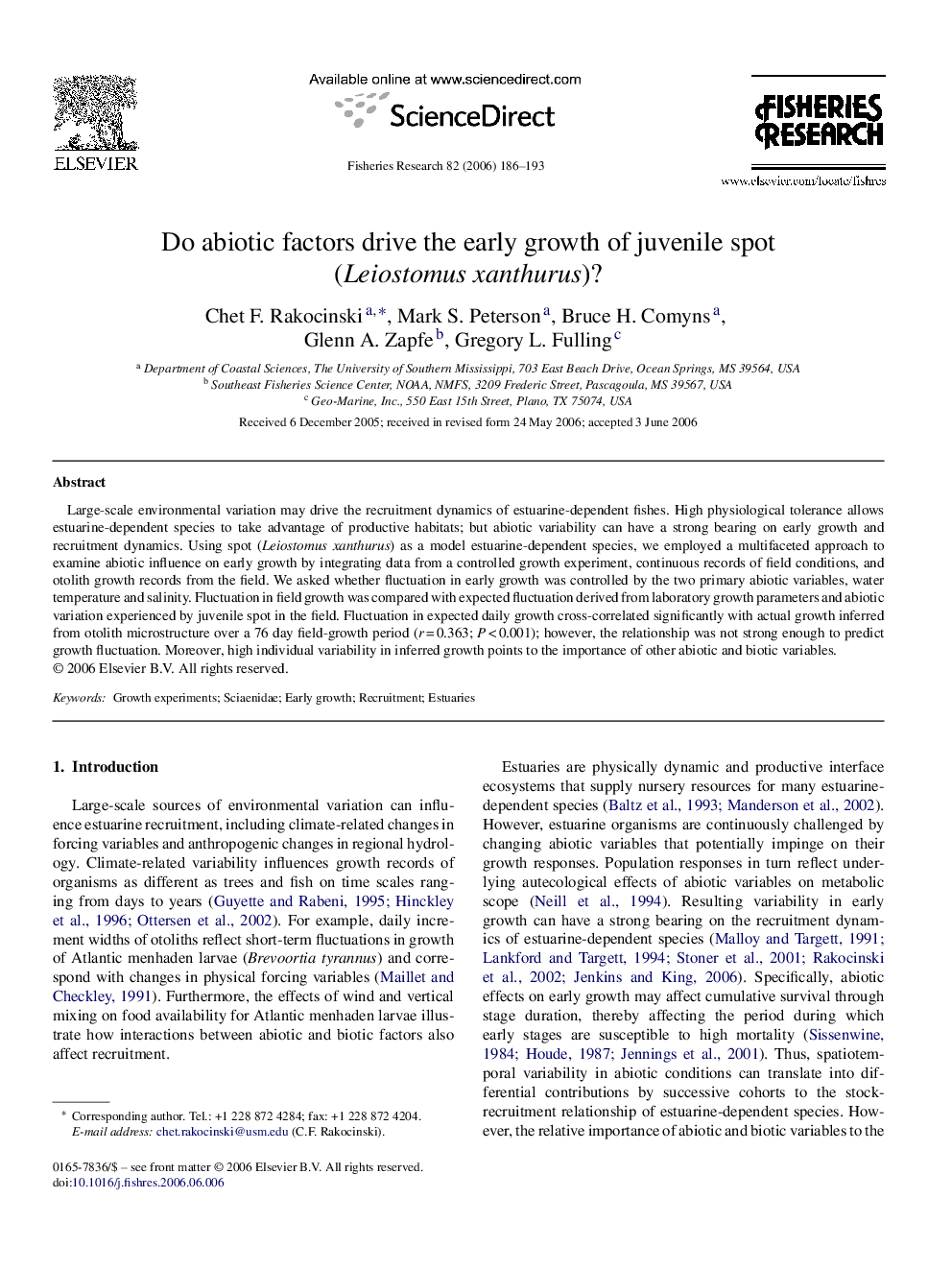| Article ID | Journal | Published Year | Pages | File Type |
|---|---|---|---|---|
| 4544839 | Fisheries Research | 2006 | 8 Pages |
Large-scale environmental variation may drive the recruitment dynamics of estuarine-dependent fishes. High physiological tolerance allows estuarine-dependent species to take advantage of productive habitats; but abiotic variability can have a strong bearing on early growth and recruitment dynamics. Using spot (Leiostomus xanthurus) as a model estuarine-dependent species, we employed a multifaceted approach to examine abiotic influence on early growth by integrating data from a controlled growth experiment, continuous records of field conditions, and otolith growth records from the field. We asked whether fluctuation in early growth was controlled by the two primary abiotic variables, water temperature and salinity. Fluctuation in field growth was compared with expected fluctuation derived from laboratory growth parameters and abiotic variation experienced by juvenile spot in the field. Fluctuation in expected daily growth cross-correlated significantly with actual growth inferred from otolith microstructure over a 76 day field-growth period (r = 0.363; P < 0.001); however, the relationship was not strong enough to predict growth fluctuation. Moreover, high individual variability in inferred growth points to the importance of other abiotic and biotic variables.
